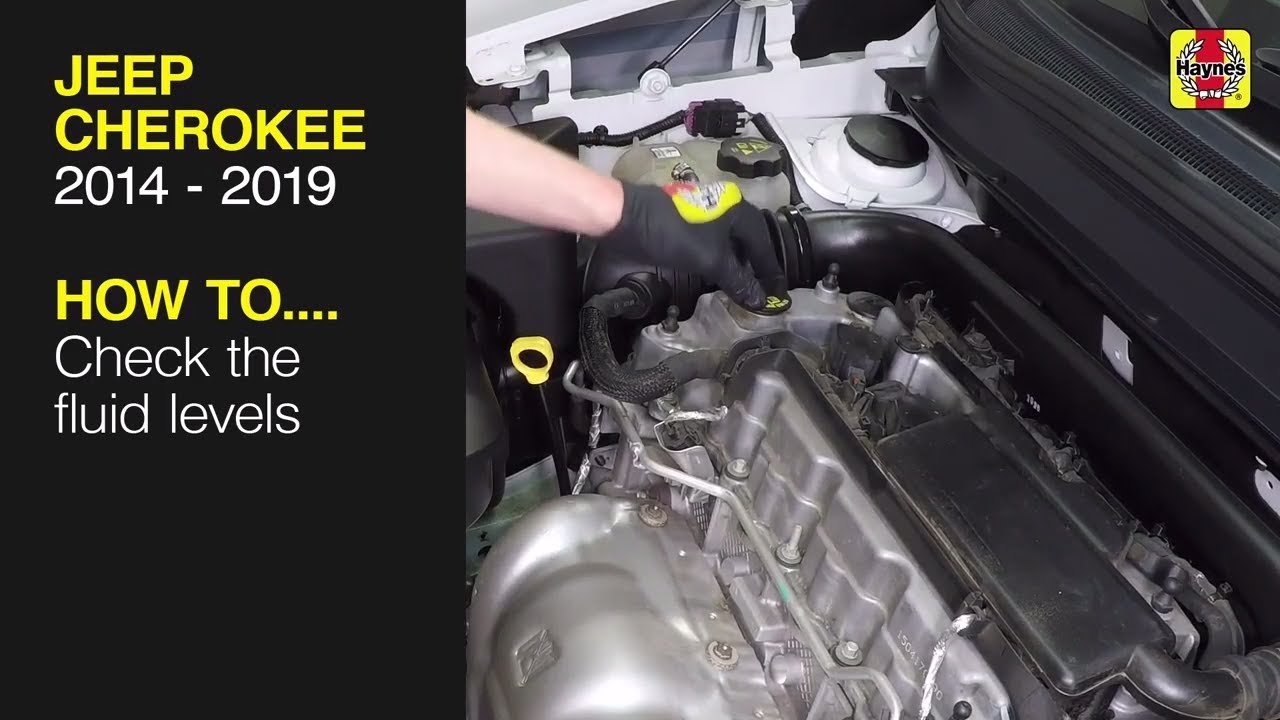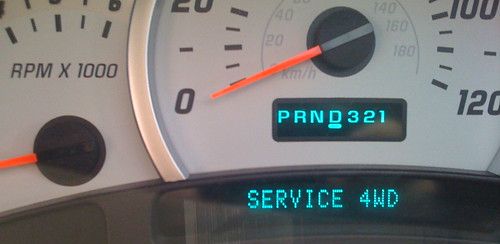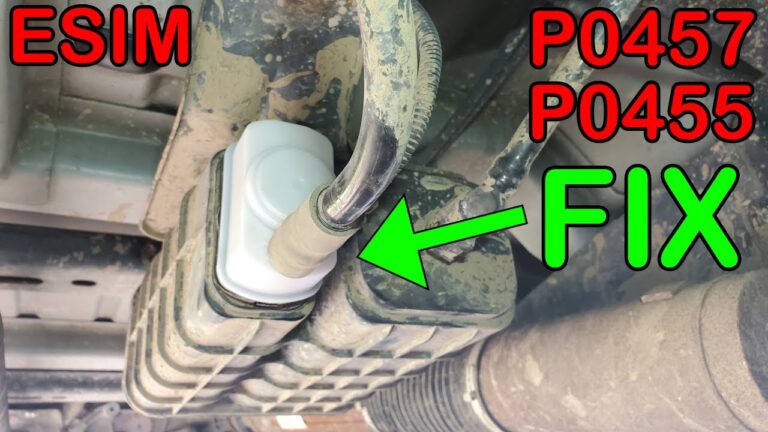How to Add Transmission Fluid Jeep Cherokee 2025
To add transmission fluid to a Jeep Cherokee, locate the transmission dipstick, remove it, and use a funnel to pour the fluid into the dipstick tube until it reaches the proper level. Jeep Cherokees require specific types of transmission fluid, so make sure to use the recommended ATF for your vehicle.
Regularly checking and maintaining the transmission fluid levels is vital to ensure smooth shifting and optimal performance of your Jeep Cherokee.
By following these steps and using the correct fluid, you can easily add transmission fluid to your Jeep Cherokee and keep it running smoothly.
Importance Of Regularly Checking Transmission Fluid
The transmission fluid in your Jeep Cherokee plays a vital role in ensuring smooth gear shifts and the overall performance of your vehicle.
It acts as a lubricant, keeping the transmission system cool and preventing excessive wear and tear.
However, over time, this essential fluid can become contaminated, losing its lubricating properties and affecting the overall functionality of your vehicle.
Prevents Costly Repairs
Regularly checking the transmission fluid level in your Jeep Cherokee can help prevent expensive repairs down the line.
Low or dirty transmission fluid can cause excessive heat build-up, leading to internal damage in the transmission system.
By maintaining the proper fluid level and quality, you can avoid major mechanical issues and the associated costs of fixing them.
Maintains Optimal Performance
Proper transmission fluid levels and quality are crucial for maintaining optimal performance in your Jeep Cherokee.
The transmission system relies on smooth and precise gear shifts to deliver power to the wheels effectively.
When the transmission fluid is low or degraded, it can lead to delayed or rough shifting, resulting in decreased acceleration and overall performance.
Regularly checking and changing the transmission fluid at recommended intervals allows your transmission system to operate at its peak, ensuring smooth gear transitions and efficient power transfer.
A well-maintained transmission enhances your driving experience and extends the lifespan of your vehicle.
Transmission Fluid Level Check Procedure
When it comes to maintaining your Jeep Cherokee, checking the transmission fluid level is an important task that should not be overlooked.
The transmission fluid plays a crucial role in ensuring smooth gear shifts and preventing damage to the transmission system.
In this section, we will guide you through the transmission fluid level check procedure in a step-by-step manner to help you keep your Jeep Cherokee running smoothly.
Park on level ground
The first step in checking the transmission fluid level is to park your Jeep Cherokee on a level surface.
This will ensure that you get an accurate reading of the fluid level. Parking on an inclined surface may result in an incorrect reading, leading to improper maintenance of your vehicle’s transmission system.
Engine warm and running
In order to get an accurate reading of the transmission fluid level, it is important to warm up your engine first.
Start your Jeep Cherokee and let it run for a few minutes to ensure that the transmission fluid is at its operating temperature. Warm fluid will provide a more accurate reading than cold fluid.
Locate transmission dipstick
The next step is to locate the transmission dipstick. In most Jeep Cherokee models, the transmission dipstick is located towards the rear of the engine compartment, near the firewall.
Consult your vehicle’s owner’s manual to find the exact location of the dipstick in your specific model.
Wipe dipstick and reinsert
Once you have located the dipstick, carefully pull it out and wipe it clean using a lint-free cloth or paper towel. Make sure to remove any traces of old transmission fluid from the dipstick.
Once clean, reinsert the dipstick back into its tube until it is fully seated.
Check fluid level
Now comes the crucial step of checking the transmission fluid level. Again, pull out the dipstick and observe the fluid level on the end of the dipstick.
There are usually markings on the dipstick indicating the optimal fluid level range.
Ensure that the fluid level is within this range. If the level is below the lower marking, you will need to add more transmission fluid.
On the other hand, if the level is above the upper marking, you may need to drain some fluid to achieve the correct level.
By following these steps and regularly checking the transmission fluid level in your Jeep Cherokee, you can ensure that your vehicle’s transmission system remains in good condition and avoid potential issues down the road.
Proper maintenance can go a long way in prolonging the life of your vehicle and keeping it running smoothly.
How To Add Transmission Fluid
If you own a Jeep Cherokee, it’s important to keep up with regular maintenance tasks, such as adding transmission fluid.
A well-maintained transmission ensures smooth shifting and extends the life of your vehicle.
In this guide, we’ll walk you through the steps of how to add transmission fluid to your Jeep Cherokee.
Gather the Necessary Tools and Materials
Before you start the process of adding transmission fluid, you’ll need to gather a few tools and materials:
- A funnel
- A clean rag
- The correct type of transmission fluid for your specific Jeep Cherokee model
Determine the Correct Transmission Fluid Type
It’s crucial to use the correct type of transmission fluid for your Jeep Cherokee. The owner’s manual or the transmission dipstick will provide you with this information.
Make sure to use the exact fluid recommended for your vehicle to maintain optimal performance.
Locate Transmission Fluid Fill Plug
Next, you’ll need to locate the transmission fluid fill plug. This plug can typically be found on the side of the transmission and is usually marked with the word “fill” or a similar indicator.
Refer to your owner’s manual or consult with a professional if you have trouble finding it.
Remove Fill Plug and Check Fluid Level
Once you’ve located the fill plug, carefully remove it using a suitable wrench or socket. Before adding more transmission fluid, check the current fluid level.
Insert your finger into the fill hole and feel for the fluid. It should be level with the bottom of the hole.
If it’s low, you’ll need to add more.
Add Fluid Using a Funnel
Using the funnel, slowly pour the recommended transmission fluid into the fill hole. Be sure to pour in small increments, allowing time for the fluid to settle before adding more.
Continuously check the fluid level until it reaches the appropriate range as indicated in the owner’s manual.
Reinstall Fill Plug and Check Fluid Level Again
Once you’ve reached the correct fluid level, carefully reinstall the fill plug and tighten it securely.
Afterward, double-check the fluid level by removing the plug and ensuring that the fluid is still within the appropriate range.
If necessary, add additional fluid as needed.
By following these steps, you can easily add transmission fluid to your Jeep Cherokee and maintain optimal performance.
Make sure to consult your owner’s manual and use the specific fluid recommended for your vehicle.
Regularly checking and adding transmission fluid will help ensure a smooth and efficient driving experience.

Credit: gobdp.com
Be Mindful Of Fluid Capacity
When it comes to maintaining your Jeep Cherokee’s performance, being mindful of the fluid capacity is crucial. One component that requires careful attention is the transmission fluid.
The transmission fluid plays a vital role in the smooth operation of your vehicle’s transmission system, keeping it well-lubricated and protected from excessive wear and tear.
Whether you’re performing a routine transmission fluid change or simply topping it up, it’s important to adhere to the correct fluid capacity.
Do Not Overfill the Transmission
One common mistake that many Jeep Cherokee owners make is overfilling the transmission with fluid.
This can lead to a host of problems, including excessive pressure within the transmission, fluid leaks, and potential damage to the system.
Overfilling the transmission can cause the fluid to foam, which in turn may result in reduced lubrication and inadequate cooling, ultimately affecting the performance and longevity of your transmission.
Refer to the Owner’s Manual for the Correct Fluid Capacity
The best way to determine the correct fluid capacity for your Jeep Cherokee’s transmission is by referring to the owner’s manual.
The owner’s manual provides detailed information on the recommended fluid type and capacity for your specific model and year.
It’s crucial to ensure that you use the right type of transmission fluid and adhere to the specified capacity.
Adding too little fluid can also be detrimental, as it may lead to inadequate lubrication and increased friction within the transmission.
Refer to the table below for a quick overview of the correct fluid capacity for some common Jeep Cherokee models:
| Model Year | Transmission Fluid Capacity |
|---|---|
| 2015 | 6.0 quarts |
| 2016 | 7.0 quarts |
| 2017 | 6.8 quarts |
| 2018 | 7.2 quarts |
Keep in mind that the fluid capacity may vary depending on the transmission model and any modifications made to your Jeep Cherokee.
Therefore, always double-check the information provided in the owner’s manual for accurate and up-to-date fluid capacity.
By being mindful of the fluid capacity when adding transmission fluid to your Jeep Cherokee, you can ensure that your transmission functions optimally and lasts for years to come.
Remember to follow the instructions in the owner’s manual and use the correct type and amount of fluid.
If you have any doubts or concerns, it’s always best to consult a professional mechanic or seek expert advice.
Use The Correct Fluid Type
When it comes to maintaining your Jeep Cherokee’s transmission, one crucial step is ensuring that you use the correct fluid type.
Using the wrong transmission fluid can lead to various issues, including poor performance and potentially costly repairs.
To avoid such problems, it is essential to know the specific fluid that is compatible with your Jeep Cherokee’s transmission.
Check Your Owner’s Manual
The first and most important step in selecting the correct fluid type is to refer to your owner’s manual.
The owner’s manual provides valuable information about the specific transmission fluid recommended by the manufacturer.
Look for the “Fluids and Lubricants” section in the manual, where you will find detailed instructions and specifications related to the transmission fluid.
Identify the Fluid Specifications
Once you have located the “Fluids and Lubricants” section in your owner’s manual, identify the specific fluid specifications for your Jeep Cherokee’s transmission.
This may include details such as the viscosity grade, ATF (Automatic Transmission Fluid) type, and any additional requirements specified by the manufacturer.
Pay close attention to these specifications, as using a fluid that deviates from the recommended requirements can lead to issues.
Choose a Reputable Brand
When selecting the transmission fluid for your Jeep Cherokee, it is crucial to choose a reputable brand.
Opting for a high-quality fluid from a trusted brand ensures that you are using a product that has been specifically formulated to meet the requirements of your vehicle.
Cheap or generic fluids may not provide the necessary protection and performance, potentially compromising the durability of your transmission.
Consider the Temperature Range
In addition to the specific fluid type, it’s essential to consider the temperature range of the area where you typically drive your Jeep Cherokee.
Transmission fluids are designed to operate optimally within specific temperature ranges.
If you frequently drive in extreme heat or cold, selecting a fluid with appropriate temperature specifications is crucial for maintaining smooth and efficient transmission operation.
Consult with a Professional
If you are uncertain about which transmission fluid to use or if you are experiencing any transmission-related issues, it is always advisable to consult with a professional.
An experienced mechanic or a dealership service center can guide you in selecting the correct fluid type for your Jeep Cherokee’s transmission, ensuring that you make the right choice.
By adhering to these guidelines and using the correct fluid type for your Jeep Cherokee’s transmission, you can help prolong its lifespan, prevent potential problems, and enjoy smooth and reliable performance on and off-road.
Check For Leaks Or Damage
Inspect the transmission and surrounding components for leaks or damage before adding fluid
Before adding transmission fluid to your Jeep Cherokee, it’s crucial to check for any leaks or damage in the transmission and the surrounding components.
Examining these elements ensures that you are not only maintaining the efficient performance of your vehicle but also preventing any potential long-term damage that may arise from issues left unnoticed.
Here are some steps to follow when inspecting for leaks or damage:
- Start by parking your vehicle on a level surface and engaging the parking brake. This will ensure that the fluid is accurately measured and that the vehicle is secure during the inspection process.
- Pop the hood and locate the transmission dipstick. It is typically labeled and can be found near the engine.
- Carefully remove the dipstick and wipe it clean with a lint-free cloth or paper towel. Be cautious not to burn yourself as the dipstick may be hot if the engine has been running.
- Next, reinsert the dipstick fully into the transmission and pull it out once more. Observe the fluid level indicated on the dipstick. The fluid should fall within the designated “full” range or between the two designated lines. If it is below the minimum line, you will need to add fluid.
- While inspecting the transmission fluid level, also pay attention to the color and quality of the fluid. It should be transparent and have a reddish hue. If the fluid appears discolored, has a burnt smell, or contains debris, it may be an indication of a larger problem and further inspection by a professional is recommended.
Ensuring the transmission and surrounding components are in good condition is essential
In addition to checking the fluid level and quality, it is equally important to visually inspect the transmission and the surrounding components for any leaks or signs of damage.
This step helps identify potential issues that may be the cause of low fluid levels or poor transmission performance.
Here’s what to look out for:
- Inspect the transmission case for any signs of fluid leakage. This can be observed as wet spots, stains, or puddles on the ground below the vehicle. Leaks can occur from seals, gaskets, or other transmission components, and should be addressed promptly to prevent further damage.
- Check the transmission lines, especially the connection points, for any signs of leaks or loose fittings. Tightening loose connections or replacing damaged lines can help maintain the integrity of the transmission system.
- Examine the transmission pan for any dents, cracks, or signs of leakage. The pan houses the transmission filter and needs to be intact to prevent debris from entering the transmission fluid.
- Inspect the drive shaft, universal joints, and CV joints for any signs of damage or excessive wear. Faulty joints can affect the performance of the transmission and lead to potential issues down the line.
- Finally, pay attention to any unusual noises or vibrations while the vehicle is running. These can be indicators of internal damage to the transmission, such as worn-out gears or bearings, and should be addressed by a professional as they require specialized knowledge and tools to diagnose and repair.
By diligently inspecting your Jeep Cherokee’s transmission and surrounding components for leaks or damage, you are taking proactive steps to ensure the longevity and optimal performance of your vehicle.
Remember, if you notice any significant issues or are unsure about the inspection process, it is always best to consult a qualified mechanic for assistance.
FAQs On How To Add Transmission Fluid Jeep Cherokee
Can I Add Transmission Fluid Myself?
Yes, you can add transmission fluid yourself. Be cautious and follow the guidelines provided by your vehicle’s manufacturer.
How Do You Top Up Transmission Fluid In A Jeep Grand Cherokee?
To top up transmission fluid in a Jeep Grand Cherokee: 1. Park the vehicle on a level surface and engage the parking brake. 2. Locate the transmission fluid dipstick, remove it, and wipe it clean. 3. Using a funnel, slowly add transmission fluid through the dipstick tube. 4. Reinsert the dipstick, remove it, and check the fluid level. Repeat until it reaches the proper level.
Where Do You Add Transmission Fluid?
You add transmission fluid in the designated fill tube or dipstick tube.
How Do You Check The Transmission Fluid On A Jeep Cherokee?
To check transmission fluid on a Jeep Cherokee: 1. Park the vehicle on a level surface and engage the parking brake. 2. Locate the transmission dipstick, usually found near the back of the engine. 3. Remove the dipstick, wipe it clean with a cloth, and reinsert it fully. 4. Remove the dipstick again and check the fluid level; it should be within the designated range.
Conclusion
To conclude, adding transmission fluid to your Jeep Cherokee is a vital task for maintaining the health and performance of your vehicle.
By following the steps outlined in this blog post, you can confidently carry out this task on your own.
Remember to gather the necessary tools, locate the correct fluid, and follow the specific instructions in your vehicle’s manual.
Regularly checking and topping up the transmission fluid will ensure smooth gear shifting, efficient power transfer, and protection from wear and tear.
With a well-maintained transmission, you can enhance the longevity of your Jeep Cherokee and avoid potentially costly repairs.
By taking the time to learn how to add transmission fluid, you empower yourself to be a proactive and responsible vehicle owner.
So, don’t hesitate to prioritize this simple maintenance task and keep your Jeep Cherokee running smoothly for years to come.





